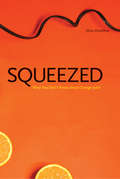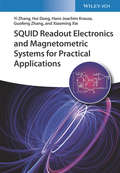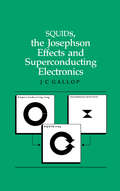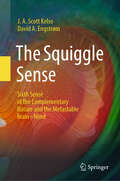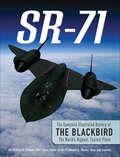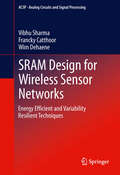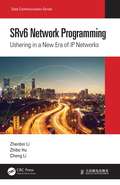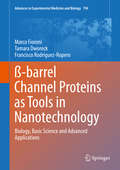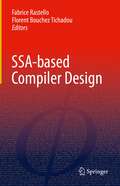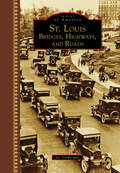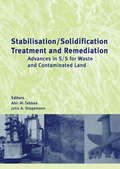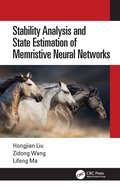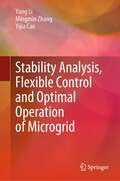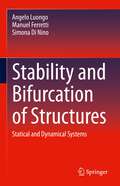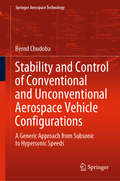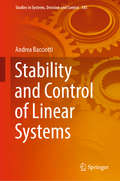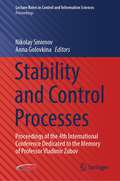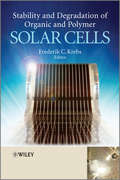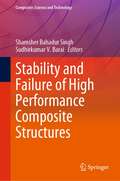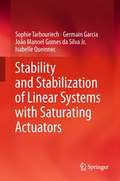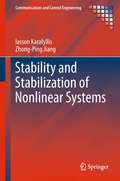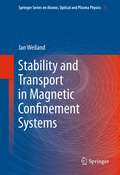- Table View
- List View
Squeezed: What You Don't Know about Orange Juice
by Alissa HamiltonClose to three quarters of U. S. households buy orange juice. Its popularity crosses class, cultural, racial, and regional divides. Why do so many of us drink orange juice? How did it turn from a luxury into a staple in just a few years? More important, how is it that we don't know the real reasons behind OJ's popularity or understand the processes by which the juice is produced? In this enlightening book, Alissa Hamilton explores the hidden history of orange juice. She looks at the early forces that propelled orange juice to prominence, including a surplus of oranges that plagued Florida during most of the twentieth century and the army's need to provide vitamin C to troops overseas during World War II. She tells the stories of the FDA's decision in the early 1960s to standardize orange juice, and the juice equivalent of the cola wars that followed between Coca-Cola (which owns Minute Maid) and Pepsi (which owns Tropicana). Of particular interest to OJ drinkers will be the revelation that most orange juice comes from Brazil, not Florida, and that even "not from concentrate" orange juice is heated, stripped of flavor, stored for up to a year, and then reflavored before it is packaged and sold. The book concludes with a thought-provoking discussion of why consumers have the right to know how their food is produced.
SQUID Readout Electronics and Magnetometric Systems for Practical Applications
by Yi Zhang Hui Dong Hans-Joachim Krause Guofeng Zhang Xiaoming XieSQUIDs, short for superconducting quantum interference devices, are very sensitive magnetometers used to measure extremely subtle magnetic fields, based on superconducting loops containing Josephson junctions. SQUIDs are developing more and more into an enabling technology for many applications such as biomagnetic imaging and geophysical prospecting. This book builds a bridge for scientists and engineers to fill potential know-how gaps for all working on SQUID systems and their practical applications. Key words such as readout electronics, flux quantization, Josephson effects or noise contributions will be no obstacle for the design and application of simple and robust SQUID systems.
SQUIDs, the Josephson Effects and Superconducting Electronics (Series In Measurement Science And Technology Ser.)
by J.C GallopThe science of superconducting electronics was first developed over forty years ago, fifty years after the discovery of superconductivity. Since then, a wide range of applications has emerged, and more are envisaged within this ever expanding and exciting field. SQUIDs, the Josephson Effects and Superconducting Electronics chronicles this development from fundamental principles to the present work with high-temperature superconductors. The book discusses superconductivity, Josephson effects, and detectors of unparalleled sensitivity such as SQUIDs. It punctuates theory with practical discussions on how to harness this new science. This complete guide to the subject is an invaluable resource for graduate students and researchers with a specific interest in this field. It also provides guidance to those working in areas of industry where superconducting electronics could be applied.
The Squiggle Sense: Sixth Sense of the Complementary Nature and the Metastable Brain~Mind
by J. A. Kelso David A. EngstrømEither/or thinking is a major stumbling block to human development and understanding. In this book Kelso & Engstrøm offer a whole new way of looking at the world, awakening a “sixth sense” that people didn’t realize they had. It draws on the profound relationship between nature’s many complementary contraries and the paradigm shifting science of coordination called Coordination Dynamics. The human brain~mind, through the multi- and metastable modes of its coordination dynamics, gives rise to a sentient faculty called the squiggle sense. Nature's contraries are perceived not only as opposing polar states, but as coexisting complementary tendencies, symbolized by the squiggle (~). Use this book to nudge your brain~mind into its metastable mode again and again, to better perceive the complementary dances of contraries, and to transcend the detrimental narrow-mindedness of polarized, either/or thinking. As a "Metastabilian" you can wield your squiggle sense to enhance and advance your life!
SR-71: The Complete Illustrated History of the Blackbird, The World's Highest, Fastest Plane
by Richard H. GrahamA pictorial history of the legendary Lockheed spy plane, written by one of its pilots and “filled to the brim with information and revelation” (Seattle Post Intelligencer Travel for Aircraft blog).At the height of the Cold War in 1964, President Johnson announced a new aircraft dedicated to strategic reconnaissance. The Lockheed SR-71 Blackbird spy plane flew more than three-and-a-half times the speed of sound, so fast that no other aircraft could catch it. Above 80,000 feet, its pilots had to wear full-pressure flight suits similar to what was used aboard the space shuttle. Developed by the renowned Lockheed Skunk Works, the SR-71 was an awesome aircraft in every respect, and it took the world by storm. The SR-71 was in service with the US Air Force from 1964 to 1998, when it was withdrawn from use, superseded by satellite technology. Twelve of the thirty-two aircraft were destroyed in accidents, but none were ever lost to enemy action. Throughout its thirty-four-year career, the SR-71 was the world’s fastest and highest-flying operational manned aircraft. It set world records for altitude and speed: an absolute altitude record of 85,069 feet on July 28, 1974, and an absolute speed record of 2,193.2 miles per hour on the same day. On September 1, 1974, it set a speed and time record over a recognized course between New York and London (3,508 miles) of 1,435.587 miles per hour and an elapsed time of 1 hour, 54 minutes, 56.4 seconds. SR-71 covers every aspect of the plane’s development, manufacture, modification, and active service from the insider’s perspective of one its pilots—and is lavishly illustrated with more than 200 photos.
SRAM Design for Wireless Sensor Networks
by Francky Catthoor Vibhu Sharma Wim DehaeneThis book features various, ultra low energy, variability resilient SRAM circuit design techniques for wireless sensor network applications. Conventional SRAM design targets area efficiency and high performance at the increased cost of energy consumption, making it unsuitable for computation-intensive sensor node applications. This book, therefore, guides the reader through different techniques at the circuit level for reducing energy consumption and increasing the variability resilience. It includes a detailed review of the most efficient circuit design techniques and trade-offs, introduces new memory architecture techniques, sense amplifier circuits and voltage optimization methods for reducing the impact of variability for the advanced technology nodes.
SRv6 Network Programming: Ushering in a New Era of IP Networks (Data Communication Series)
by Cheng Li Zhenbin Li Zhibo HuSRv6 Network Programming, beginning with the challenges for Internet Protocol version 6 (IPv6) network development, describes the background, roadmap design, and implementation of Segment Routing over IPv6 (SRv6), as well as the application of this technology in traditional and emerging services. The book begins with the development of IP technologies by focusing on the problems encountered during MPLS and IPv6 network development, giving readers insights into the problems tackled by SRv6 and the value of SRv6. It then goes on to explain SRv6 fundamentals, including SRv6 packet header design, the packet forwarding process, protocol extensions such as Interior Gateway Protocol (IGP), Border Gateway Protocol (BGP), and Path Computation Element Protocol (PCEP) extensions, and how SRv6 supports existing traffic engineering (TE), virtual private networks (VPN), and reliability requirements. Next, SRv6 network deployment is introduced, covering the evolution paths from existing networks to SRv6 networks, SRv6 network deployment processes, involved O&M technologies, and emerging 5G and cloud services supported by SRv6. Bit Index Explicit Replication IPv6 encapsulation (BIERv6), an SRv6 multicast technology, is then introduced as an important supplement to SRv6 unicast technology. The book concludes with a summary of the current status of the SRv6 industry and provides an outlook for new SRv6-based technologies. SRv6 Network Programming: Ushering in a New Era of IP Networks collects the research results of Huawei SRv6 experts and reflects the latest development direction of SRv6. With rich, clear, practical, and easy-to-understand content, the volume is intended for network planning engineers, technical support engineers and network administrators who need a grasp of the most cutting-edge IP network technology. It is also intended for communications network researchers in scientific research institutions and universities. Authors: Zhenbin Li is the Chief Protocol Expert of Huawei and member of the IETF IAB, responsible for IP protocol research and standards promotion at Huawei. Zhibo Hu is a Senior Huawei Expert in SR and IGP, responsible for SR and IGP planning and innovation. Cheng Li is a Huawei Senior Pre-research Engineer and IP standards representative, responsible for Huawei's SRv6 research and standardization.
ß-barrel Channel Proteins as Tools in Nanotechnology
by Marco Fioroni Tamara Dworeck Francisco Rodriguez-Roperoß-barrel outer membrane channel proteins (OMP) are useful as robust and flexible models or components in nanotechnology. Over the last decade biotechnological techniques allowed to expand the natural characteristics of OMPs by modifying their geometry and properties. The present book is oriented towards a broad group of readers including graduate students and advanced researchers. It gives a general introduction to the field of OMP based nano-component development as well as the state of the art of the involved research. On the example of the E. coli FhuA the transformation of an OMP into a tailored nano-channel will be outlined. An exhaustive description of the scientific strategy, including protein selection, analytical methods and "in-silico" tools to support the planning of protein modifications for a targeted application, consideration on the production of a custom made OMP, and an overview on technological applications including membrane/polymersome technology, will be provided.
SSA-based Compiler Design
by Fabrice Rastello Florent Bouchez TichadouThis book provides readers with a single-source reference to static-single assignment(SSA)-based compiler design. It is the first (and up to now only) book that coversin a deep and comprehensive way how an optimizing compiler can be designed usingthe SSA form. After introducing vanilla SSA and its main properties, the authorsdescribe several compiler analyses and optimizations under this form. They illustratehow compiler design can be made simpler and more efficient, thanks to the SSA form.This book also serves as a valuable text/reference for lecturers, making the teaching ofcompilers simpler and more effective. Coverage also includes advanced topics, such ascode generation, aliasing, predication and more, making this book a valuable referencefor advanced students and practicing engineers.
St. Louis: Bridges, Highways, and Roads (Images of America)
by Joe SondermanEvery street has a story. From the humblest cul-de-sac to the roaring interstates, the roads tell the stories and reveal the character that make each neighborhood unique. St. Louis was born of the great rivers, so its bridges played a crucial role. Together, the names of the roads tell the history of the child of the rivers that became the Gateway to the West. There are the stories behind the French street names pronounced in a uniquely St. Louis manner, the names purged from the map during World War I, and the histories behind the pioneers, politicians, developers, and everyday people who built St. Louis. Here are also the tragic tales of the epic struggle to bridge the great rivers. These photographs, many never published before, will show it all.
Stabilisation/Solidification Treatment and Remediation: Proceedings of the International Conference on Stabilisation/Solidification Treatment and Remediation, 12-13 April 2005, Cambridge, UK
by Abir Al-Tabbaa Julia A. StegemannStabilisation/Solidification Treatment and Remediation - Advances in S/S for Waste and Contaminated Land contains 39 papers, summaries of the four keynote lectures and the seven State of Practice reports presented at the International Conference organized by the EPSRC-funded network STARNET (Stabilisation/solidification treatment and remediation).
Stability Analysis and Control of Powertrain for New Energy Vehicles (Key Technologies on New Energy Vehicles)
by Donghai Hu Bifeng YinThis book introduces the application of nonlinear dynamics theory for driving system of electric vehicle and hybrid electric vehicle respectively. It establishes the dynamic models for driving system of electric vehicle and hybrid electric vehicle under various working conditions. And the nonlinear dynamics theory is applied to the qualitative analysis and quantitative calculation for the models. The theoretical analysis results are applied to guide the optimization of control strategies. In the end of each chapter, corresponding simulations or experiments are provided to verify the corresponding instances which are carefully selected. This book will give some guidance to readers when they deal with nonlinear dynamics problems of vehicles in the future and provide theoretical bases for the further study of the nonlinear dynamics for driving system of electric vehicle and hybrid electric vehicle.The book is written for engineer of electric vehicle and hybrid vehicle, teachers and students majoring in automobile and automation.
Stability Analysis and State Estimation of Memristive Neural Networks
by Hongjian Liu Zidong Wang Lifeng MaIn this book, the stability analysis and estimator design problems are discussed for delayed discrete-time memristive neural networks. In each chapter, the analysis problems are firstly considered, where the stability, synchronization and other performances (e.g., robustness, disturbances attenuation level) are investigated within a unified theoretical framework. In this stage, some novel notions are put forward to reflect the engineering practice. Then, the estimator design issues are discussed where sufficient conditions are derived to ensure the existence of the desired estimators with guaranteed performances. Finally, the theories and techniques developed in previous parts are applied to deal with some issues in several emerging research areas. The book Unifies existing and emerging concepts concerning delayed discrete memristive neural networks with an emphasis on a variety of network-induced phenomena Captures recent advances of theories, techniques, and applications of delayed discrete memristive neural networks from a network-oriented perspective Provides a series of latest results in two popular yet interrelated areas, stability analysis and state estimation of neural networks Exploits a unified framework for analysis and synthesis by designing new tools and techniques in combination with conventional theories of systems science, control engineering and signal processing Gives simulation examples in each chapter to reflect the engineering practice
Stability Analysis, Flexible Control and Optimal Operation of Microgrid
by Yong Li Mingmin Zhang Yijia CaoThis book intends to report the new results of the microgrid in stability analysis, flexible control and optimal operation. The oscillatory stability issue of DC microgrid is explored and further solved. Flexible and stable voltage & frequency control of microgrid is put forward considering the distributed generations or distributed energy storages. The optimal operation of multi-energy is researched in view of economic efficiency and low-carbon development. The results of this book are original from authors who carry out the related research together for a long time, which is a comprehensive summary for authors’ latest research results. The book is likely to be of interest to university researchers, electrical engineers and graduate students in power systems, power electronics, renewable energy and microgrid.
Stability and Bifurcation of Structures: Statical and Dynamical Systems
by Angelo Luongo Manuel Ferretti Simona Di NinoThis book overcomes the separation existing in literature between the static and the dynamic bifurcation worlds. It brings together buckling and post-buckling problems with nonlinear dynamics, the bridge being represented by the perturbation method, i.e., a mathematical tool that allows for solving static and dynamic problems virtually in the same way. The book is organized as follows: Chapter one gives an overview; Chapter two illustrates phenomenological aspect of static and dynamic bifurcations; Chapter three deals with linear stability analysis of dynamical systems; Chapter four and five discuss the general theory and present examples of buckling and post-buckling of elastic structures; Chapter six describes a linearized approach to buckling, usually adopted in the technical literature, in which pre-critical deformations are neglected; Chapters seven to ten, analyze elastic and elasto-plastic buckling of planar systems of beams, thin-walled beams and plate assemblies, respectively; Chapters eleven to thirteen, illustrate dynamic instability phenomena, such as flutter induced by follower forces, aeroelastic bifurcations caused by wind flow, and parametric excitation triggered by pulsating loads. Finally, Chapter fourteen discusses a large gallery of solved problems, concerning topics covered in the book. An Appendix presents the Vlasov theory of open thin-walled beams. The book is devoted to advanced undergraduate and graduate students, as well as engineers and practitioners. The methods illustrated here are immediately applicable to model real problems.The BookIntroduces, in a simple way, complex concepts of bifurcation theory, by making use of elementary mathematicsGives a comprehensive overview of bifurcation of linear and nonlinear structures, in static and dynamic fieldsContains a chapter in which many problems are solved, either analytically or numerically, and results commented
Stability and Control of Conventional and Unconventional Aerospace Vehicle Configurations: A Generic Approach from Subsonic to Hypersonic Speeds (Springer Aerospace Technology)
by Bernd ChudobaThis book introduces a stability and control methodology named AeroMech, capable of sizing the primary control effectors of fixed wing subsonic to hypersonic designs of conventional and unconventional configuration layout. Control power demands are harmonized with static-, dynamic-, and maneuver stability requirements, while taking the six-degree-of-freedom trim state into account. The stability and control analysis solves the static- and dynamic equations of motion combined with non-linear vortex lattice aerodynamics for analysis. The true complexity of addressing subsonic to hypersonic vehicle stability and control during the conceptual design phase is hidden in the objective to develop a generic (vehicle configuration independent) methodology concept. The inclusion of geometrically asymmetric aircraft layouts, in addition to the reasonably well-known symmetric aircraft types, contributes significantly to the overall technical complexity and level of abstraction. The first three chapters describe the preparatory work invested along with the research strategy devised, thereby placing strong emphasis on systematic and thorough knowledge utilization. The engineering-scientific method itself is derived throughout the second half of the book. This book offers a unique aerospace vehicle configuration independent (generic) methodology and mathematical algorithm. The approach satisfies the initial technical quest: How to develop a ‘configuration stability & control’ methodology module for an advanced multi-disciplinary aerospace vehicle design synthesis environment that permits consistent aerospace vehicle design evaluations?
Stability and Control of Linear Systems (Studies in Systems, Decision and Control #185)
by Andrea BacciottiThis advanced textbook introduces the main concepts and advances in systems and control theory, and highlights the importance of geometric ideas in the context of possible extensions to the more recent developments in nonlinear systems theory. Although inspired by engineering applications, the content is presented within a strong theoretical framework and with a solid mathematical background, and the reference models are always finite dimensional, time-invariant multivariable linear systems. The book focuses on the time domain approach, but also considers the frequency domain approach, discussing the relationship between the two approaches, especially for single-input-single-output systems. It includes topics not usually addressed in similar books, such as a comparison between the frequency domain and the time domain approaches, bounded input bounded output stability (including a characterization in terms of canonical decomposition), and static output feedback stabilization for which a simple and original criterion in terms of generalized inverse matrices is proposed. The book is an ideal learning resource for graduate students of control theory and automatic control courses in engineering and mathematics, as well as a reference or self-study guide for engineers and applied mathematicians.
Stability and Control of Nonlinear Time-varying Systems
by Shuli Guo Lina HanThis book presents special systems derived from industrial models, including the complex saturation nonlinear functions and the delay nonlinear functions. It also presents typical methods, such as the classical Liapunov and Integral Inequalities methods. Providing constructive qualitative and stability conditions for linear systems with saturated inputs in both global and local contexts, it offers practitioners more concise model systems for modern saturation nonlinear techniques, which have the potential for future applications. This book is a valuable guide for researchers and graduate students in the fields of mathematics, control, and engineering.
Stability and Control Processes: Proceedings of the 4th International Conference Dedicated to the Memory of Professor Vladimir Zubov (Lecture Notes in Control and Information Sciences - Proceedings)
by Nikolay Smirnov Anna GolovkinaThe proceedings of the 4th Stability and Control Processes Conference are focused on modern applied mathematics, stability theory, and control processes. The conference was held in recognition of the 90th birthday of Professor Vladimir Ivanovich Zubov (1930–2000).This selection of papers reflects the wide-ranging nature of V. I. Zubov’s work, which included contributions to the development of the qualitative theory of differential equations, the theory of rigid body motion, optimal control theory, and the theory of electromagnetic fields. It helps to advance many aspects of the theory of control systems, including questions of motion stability, nonlinear oscillations in control systems, navigation and reliability of control devices, vibration theory, and quantization of orbits. The disparate applications covered by the book – in mechanical systems, game theory, solid-state physics, socio-economic systems and medical and biological systems, control automata and navigation – are developments from Professor Zubov’s in-depth studies on the theory of stability of motion, the theory of automatic control and the theory of the motions of optimal processes. Stability and Control Processes presents research continuing the legacy of V. I. Zubov and updates it with sections focused on intelligence-based control. These proceedings will be of interest to academics, professionals working in industry and researchers alike.
Stability and Degradation of Organic and Polymer Solar Cells
by Frederik C. KrebsOrganic photovoltaics (OPV) are a new generation of solar cells with the potential to offer very short energy pay back times, mechanical flexibility and significantly lower production costs compared to traditional crystalline photovoltaic systems. A weakness of OPV is their comparative instability during operation and this is a critical area of research towards the successful development and commercialization of these 3rd generation solar cells.Covering both small molecule and polymer solar cells, Stability and Degradation of Organic and Polymer Solar Cells summarizes the state of the art understanding of stability and provides a detailed analysis of the mechanisms by which degradation occurs. Following an introductory chapter which compares different photovoltaic technologies, the book focuses on OPV degradation, discussing the origin and characterization of the instability and describing measures for extending the duration of operation.Topics covered include:Chemical and physical probes for studying degradation Imaging techniques Photochemical stability of OPV materials Degradation mechanisms Testing methods Barrier technology and applications Stability and Degradation of Organic and Polymer Solar Cells is an essential reference source for researchers in academia and industry, engineers and manufacturers working on OPV design, development and implementation.
Stability and Failure of High Performance Composite Structures (Composites Science and Technology)
by Shamsher Bahadur Singh Sudhirkumar V. BaraiThis book is written to introduce the application of high-performance composite materials such as fiber reinforced polymers, functionally graded composites, and sustainable fiber reinforced composites for development of thin-walled plated structures, beams, girders, and deck structures subjected to different kinds of loads. This book also includes test cases and its validation with finite element method using general purpose commercial computer software. Moreover, the book also deals with design methodology of advanced composite materials based on different applications. The comprehensive overview of the state-of-the-art research on the high-performance composite structures dealing with their stability, response, and failure characteristics will be of significant interest to scientists, researchers, students, and engineers working in the thrust area of advanced composite structures. This book is also helpful for Ph.D. candidates for developing their fundamental understanding on high-performance composite structures, and it will also appropriate for master- and undergraduate-level courses on design of composite structures especially for Civil Engineering Infrastructures.
Stability and Stabilization of Linear Systems with Saturating Actuators
by João Manoel Gomes Da Silva Jr. Germain Garcia Isabelle Queinnec Sophie TarbouriechThis monograph details basic concepts and tools fundamental for the analysis and synthesis of linear systems subject to actuator saturation and developments in recent research. The authors use a state-space approach and focus on stability analysis and the synthesis of stabilizing control laws in both local and global contexts. Different methods of modeling the saturation and behavior of the nonlinear closed-loop system are given special attention. Various kinds of Lyapunov functions are considered to present different stability conditions. Results arising from uncertain systems and treating performance in the presence of saturation are given. The text proposes methods and algorithms, based on the use of linear programming and linear matrix inequalities, for computing estimates of the basin of attraction and for designing control systems accounting for the control bounds and the possibility of saturation. They can be easily implemented with mathematical software packages.
Stability and Stabilization of Nonlinear Systems
by Zhong-Ping Jiang Iasson KarafyllisRecently, the subject of nonlinear control systems analysis has grown rapidly and this book provides a simple and self-contained presentation of their stability and feedback stabilization which enables the reader to learn and understand major techniques used in mathematical control theory. In particular: the important techniques of proving global stability properties are presented closely linked with corresponding methods of nonlinear feedback stabilization; a general framework of methods for proving stability is given, thus allowing the study of a wide class of nonlinear systems, including finite-dimensional systems described by ordinary differential equations, discrete-time systems, systems with delays and sampled-data systems; approaches to the proof of classical global stability properties are extended to non-classical global stability properties such as non-uniform-in-time stability and input-to-output stability; and new tools for stability analysis and control design of a wide class of nonlinear systems are introduced. The presentational emphasis of Stability and Stabilization of Nonlinear Systems is theoretical but the theory's importance for concrete control problems is highlighted with a chapter specifically dedicated to applications and with numerous illustrative examples. Researchers working on nonlinear control theory will find this monograph of interest while graduate students of systems and control can also gain much insight and assistance from the methods and proofs detailed in this book.
Stability and Stabilization of Nonlinear Systems
by Iasson Karafyllis Zhong-Ping JiangRecently, the subject of nonlinear control systems analysis has grown rapidly and this book provides a simple and self-contained presentation of their stability and feedback stabilization which enables the reader to learn and understand major techniques used in mathematical control theory. In particular: the important techniques of proving global stability properties are presented closely linked with corresponding methods of nonlinear feedback stabilization; a general framework of methods for proving stability is given, thus allowing the study of a wide class of nonlinear systems, including finite-dimensional systems described by ordinary differential equations, discrete-time systems, systems with delays and sampled-data systems; approaches to the proof of classical global stability properties are extended to non-classical global stability properties such as non-uniform-in-time stability and input-to-output stability; and new tools for stability analysis and control design of a wide class of nonlinear systems are introduced. The presentational emphasis of Stability and Stabilization of Nonlinear Systems is theoretical but the theory's importance for concrete control problems is highlighted with a chapter specifically dedicated to applications and with numerous illustrative examples. Researchers working on nonlinear control theory will find this monograph of interest while graduate students of systems and control can also gain much insight and assistance from the methods and proofs detailed in this book.
Stability and Transport in Magnetic Confinement Systems
by Jan WeilandStability and Transport in Magnetic Confinement Systems provides an advanced introduction to the fields of stability and transport in tokamaks. It serves as a reference for researchers with its highly-detailed theoretical background, and contains new results in the areas of analytical nonlinear theory of transport using kinetic theory and fluid closure. The use of fluid descriptions for advanced stability and transport problems provide the reader with a better understanding of this topic. In addition, the areas of nonlinear kinetic theory and fluid closure gives the researcher the basic knowledge of a highly relevant area to the present development of transport physics.
